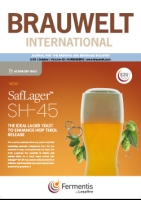Together with China, India with its estimated 1.23 billion population is one of the fastest growing major economies in Asia, which is currently undergoing both rapid growth and industrialisation. While most of the traditionally strong economies in the world suffered greatly under the global economic crisis, India overcame it quite easily. Today, a strong consuming class in India with disposable income has triggered the world’s attention and many international companies are looking for opportunities to establish business in India.
Due to the rising cost of energy and raw materials, the current climate debate and stricter regulations governing environmental policies, businesses are experiencing greater pressure than ever before, which is creating new challenges for internal logistics in almost all types of production plants. A structured approach can be beneficial in meeting the demands for moving towards more sustainable intralogistics. For example, the introduction of a monitoring system, able to measure sustainability parameters, supports the evaluation of steps taken for raising efficiency and therefore the utilization of potential for savings linked to their implementation.
Global players and small and medium-sized breweries have realised the savings potential offered by alternative filtration methods in terms of water consumption, disposal, inventory management etc. In addition, the disposal of traditional filter aids such as kieselguhr is currently under discussion, and the outcome of these discussions is uncertain. Begerow is responding to current and future questions regarding innovation and sustainability with its “greenomic” philosophy, while at the same time addressing economic aspects. Using three breweries as examples, this article explains the options this system offers and the associated average filtration costs compared with conventional kieselguhr filtration. The investment costs are not discussed, since they always depend on equipment that may already exist.
Detection of trace bacterial contamination in the brewery using conventional culture methods is often a long, complex process. Since bacteria multiply only very slowly under certain conditions, the time required to achieve reliable analysis results is equally lengthy (5 – 10 days). A modern method, such as real-time PCR shortens analysis times significantly (24 – 48 hours). With the foodproof Beer Screening Kit from Biotecon Diagnostics, almost all beer spoilage contaminants can be identified without any additional effort or loss of time. With this essential information, the risk management response can be improved and costs reduced dramatically.
Increasing competition, pressure on the margins due to higher costs for raw materials, more stringent legislation for the disposal of diatomaceous earth and effluent water and a tendency of product differentiation to maintain the margins – these are just a few of the challenges breweries are facing in virtually every geographical area that force brewers to change their investment philosophy and to optimize their economies of scale. Therefore large brewing groups tend to design and construct multiple three to five million hectoliter Greenfield operations instead of enlarging existing Brownfield plants to 10 or even 15 million hectoliters.
A new composite filtration material is now on the market, Celite Cynergy™, which is aimed to replace the conventional mixtures of diatomaceous earth (DE) and silica hydrogels and xerogels that are required for beer stabilisation and shelf life. This article describes the results of the trials carried out at Rupp Bräu brewery, Lauenau, Germany.
Reducing energy and water consumption is an important topic for the brewing industry. Both economic and environmental factors play a decisive role in the quest to minimise energy and water consumption. The question is what energy efficiencies do other breweries achieve and what is best practice? Prompted by an agreement with the government, the Dutch Brewers Association (CBK) set out to develop a methodology in 2000 to establish the worldwide benchmark in specific energy consumption for the brewing industry. The benchmark has been repeated in 2004 and again in 2008.
The search continues for alternative filter aids in light of the growing number of problems associated with kieselguhr. Mid-sized breweries are particularly in need of solutions that can be implemented using their existing equipment. From time to time, research is published about pre-coat filtration using cellulose fibers. A systematic review [1] and assessment of the current literature yielded the following information regarding the basic properties of cellulose-based filter aids. It is possible to use cellulose fibers for pre-coat filtration if the beer has already been well-clarified. However, in order for this method to be economical, multiple regeneration cycles are necessary due to the high cost of cellulose as a filter aid.
Stability problems in packaged beer and problems with filtration are encountered on a daily basis in breweries. The sources of these problems are so diverse that they can be traced back through virtually every step in the entire production process. This report offers practical hints for help with situations that typically crop up over the course of a normal workday in a brewery.
The InPro® 8600 dual-angle scattered light sensor from Mettler-Toledo, Gießen, monitors turbidity after the sheet filter and controls dosage for the kieselguhr filter at Herforder Brewery. This process assures beer quality and optimises filtration.
As part of a dissertation, the influence of the mashing operation of the filterability of beer was investigated on an industrial scale at the Oettinger Brewery’s South Facility in Oettingen. For this purpose, beers were produced with and without vibration input during the mashing process, and filtered using a crossflow membrane filtration system. In these trials, the beers with a vibration input exhibited significantly better filterability, not explainable in terms of traditional analytics. It is, rather, the result of a different particle size distribution in the beers being filtered, attributable to the more efficient conversion processes involved.


